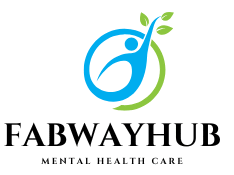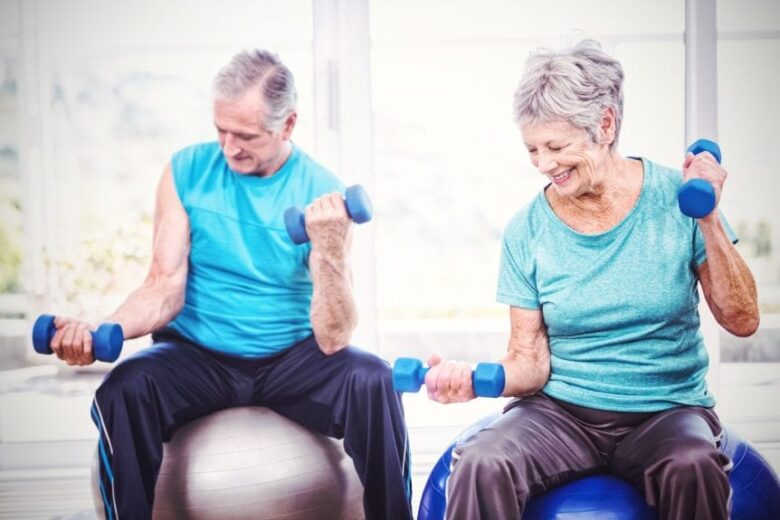Reaching the age of 50 is a notable turning point in life. As we age, maintaining a healthy lifestyle becomes even more important, especially when it comes to nutrition and fitness. The right diet and regular physical activity are key to maintaining your energy, independence, and overall well-being as you grow older. In this article, we’ll explore the best practices for nutrition and fitness that promote healthy aging after 50, ensuring you can continue living an active and fulfilling life.
The Role of Nutrition in Healthy Aging
As we age, our nutritional needs change. It becomes even more essential to fuel the body with the right nutrients to support various functions, including bone health, muscle mass, cognitive function, and immune system strength.
Prioritize Protein for Muscle Health
After 50, maintaining muscle mass becomes a priority. Sarcopenia, the gradual loss of muscle mass, naturally occurs with aging, and consuming enough protein can help prevent this decline. Protein also supports metabolism, bone health, and wound healing.
Include high-quality protein sources in your daily meals such as lean meats, fish, eggs, legumes, and dairy products. Aim to consume 1.0 to 1.2 grams of protein per kilogram of body weight to maintain and rebuild muscle tissue. For example, if you weigh 150 pounds (68 kg), try to consume around 68 to 82 grams of protein daily.
Incorporate Healthy Fats
Healthy fats are essential for brain health, hormone regulation, and reducing inflammation. Omega-3 fatty acids, in particular, are linked to improved cognitive function and a reduced risk of chronic diseases. Include foods like fatty fish (salmon, mackerel, sardines), flaxseeds, chia seeds, walnuts, and olive oil in your diet to get an ample supply of omega-3s.
Avoid excessive intake of saturated fats and trans fats, which can contribute to heart disease and other chronic conditions. Opt for heart-healthy fats to support long-term wellness.
Focus on Fiber-Rich Foods
Digestive health can become a concern as we age, and fiber is essential for maintaining a healthy digestive system. Fiber aids in digestion, prevents constipation, and helps regulate blood sugar and cholesterol levels. It also promotes heart health, which is especially important after 50.
Make sure to include a variety of fiber-rich foods in your diet, such as whole grains, fruits, vegetables, beans, and legumes. Aim for at least 25-30 grams of fiber per day, as recommended by the American Heart Association.
Calcium and Vitamin D for Bone Health
Osteoporosis, or bone loss, is a major concern as we age, especially for women after menopause. Calcium and vitamin D are critical for maintaining strong, healthy bones. Calcium helps maintain bone density, while vitamin D assists in calcium absorption.
Incorporate calcium-rich foods such as dairy products, fortified plant-based milk, leafy green vegetables, and fortified cereals. To ensure adequate vitamin D levels, spend time in the sun, eat foods like fatty fish, egg yolks, and fortified dairy products, or consider taking a supplement if needed.
Hydration is Key
Dehydration becomes more common as we age, and it can affect many aspects of our health, from cognitive function to kidney health. Proper hydration is vital for maintaining energy, supporting digestion, and keeping skin healthy. Aim to drink at least 8 cups of water per day and consider incorporating water-rich foods like cucumbers, watermelon, and oranges into your diet.
Fitness Tips for Healthy Aging After 50
Fitness is just as important as nutrition when it comes to healthy aging. Physical activity helps maintain muscle mass, improves cardiovascular health, and boosts energy levels, all of which are crucial for staying independent and active in later years.
Strength Training to Maintain Muscle Mass
Strength training is one of the most effective ways to combat muscle loss and improve bone density. As you age, muscle mass naturally declines, but incorporating strength training exercises can help slow down this process and even rebuild lost muscle.
Try to engage in strength training exercises two to three times a week. Focus on exercises that target all major muscle groups, such as squats, lunges, push-ups, and rows. You can use free weights, resistance bands, or bodyweight exercises to build strength. Begin with lighter weights and gradually increase the resistance as your strength improves.
Aerobic Exercise for Cardiovascular Health
Aerobic exercise is essential for maintaining a healthy heart and lungs. It also helps improve stamina, manage weight, and reduce the risk of chronic diseases such as diabetes, hypertension, and heart disease.
Incorporate at least 150 minutes of moderate-intensity aerobic exercise per week, which can be broken down into 30 minutes of activity five days a week. Walking, swimming, cycling, or dancing are all great low-impact aerobic exercises that are easy on the joints while still providing heart-healthy benefits.
Balance and Flexibility Exercises to Prevent Falls
Falls are a major concern as we age, especially since the risk of bone fractures increases. Maintaining balance and flexibility is key to preventing falls and maintaining mobility. Simple balance exercises, such as standing on one foot, heel-to-toe walking, or tai chi, can improve coordination and reduce the risk of falls.
Incorporate flexibility exercises like stretching, yoga, or Pilates to improve joint mobility and flexibility. These exercises help reduce stiffness, enhance posture, and increase flexibility, making it easier to move around and perform everyday tasks.
Low-Impact Exercises for Joint Health
As we age, joint health becomes more important, and it’s crucial to choose exercises that don’t put excessive strain on the joints. Low-impact exercises like swimming, cycling, or using an elliptical machine provide an excellent cardiovascular workout while being gentle on the joints.
If you experience joint pain, consider activities like water aerobics or chair yoga, which are easier on the body but still effective for improving strength, flexibility, and cardiovascular health.
Creating a Balanced Daily Routine
To maximize the benefits of nutrition and fitness for healthy aging after 50, it’s essential to create a balanced daily routine that incorporates both healthy eating and regular physical activity. Here’s a sample daily routine to help you get started:
| Time | Activity |
|---|---|
| Morning | – Drink a glass of water upon waking. |
| – Start the day with a 20-30 minute walk or light cardio. | |
| – Have a protein-rich breakfast (e.g., eggs and whole grain toast). | |
| Mid-Morning | – Snack on fruit and a handful of nuts or yogurt. |
| Afternoon | – 30 minutes of strength training (2-3 times a week). |
| – A balanced lunch with lean protein, vegetables, and whole grains. | |
| Evening | – A relaxing activity like yoga, tai chi, or stretching. |
| – A light, healthy dinner with vegetables, whole grains, and healthy fats. | |
| Throughout the Day | – Drink plenty of water and stay hydrated. |
Frequently Asked Questions (FAQs)
1. How much protein should I consume after 50?
After 50, it’s important to consume enough protein to support muscle health. Aim for about 1.0 to 1.2 grams of protein per kilogram of body weight daily. Include lean meats, fish, eggs, and plant-based protein sources like beans and lentils in your diet.
2. What are some low-impact exercises for joint health?
Low-impact exercises like swimming, cycling, and walking are excellent for joint health. These activities provide a cardiovascular workout without putting excess strain on the joints.
3. How can I prevent bone loss after 50?
To prevent bone loss, make sure to get enough calcium and vitamin D. Incorporate weight-bearing exercises such as walking or strength training to stimulate bone growth. Foods like dairy, leafy greens, and fortified products are excellent sources of these nutrients.
4. How much exercise do I need after 50?
Aim for at least 150 minutes of moderate-intensity aerobic exercise per week, combined with strength training exercises two to three times a week. Balance exercises, like tai chi, should also be incorporated to prevent falls.
Conclusion
Healthy aging after 50 is achievable through proper nutrition and fitness. By adopting a balanced diet, rich in protein, healthy fats, fiber, and essential vitamins and minerals, you can support your body’s needs and maintain vitality. Complementing this with regular physical activity, including strength training, cardiovascular exercises, and flexibility training, will help you stay strong, independent, and energetic. Aging gracefully is all about making small, consistent efforts every day to improve your health and well-being.
References:
-
National Institute on Aging – Healthy Aging
-
Centers for Disease Control and Prevention – Physical Activity Guidelines for Older Adults




